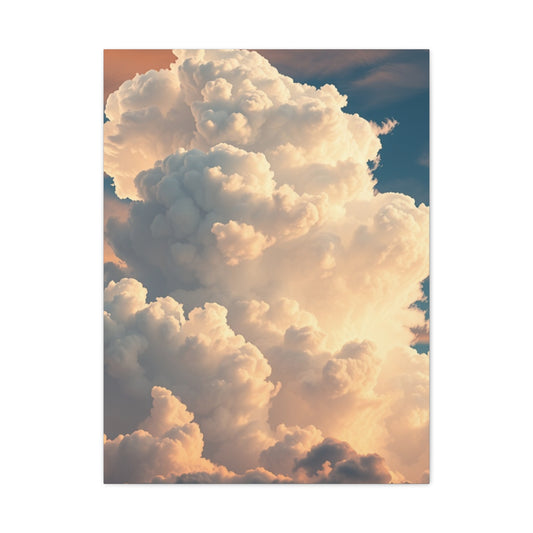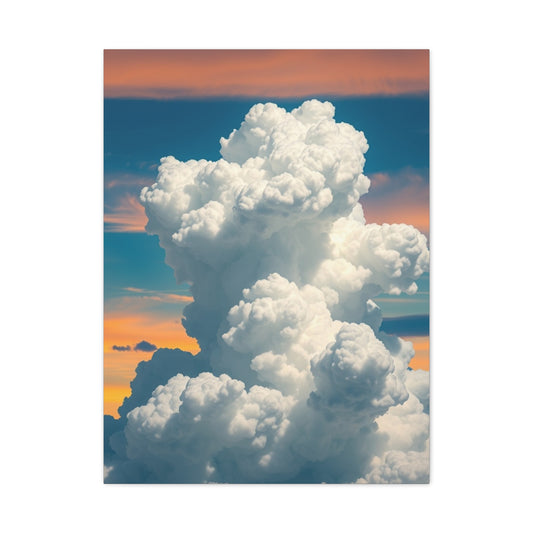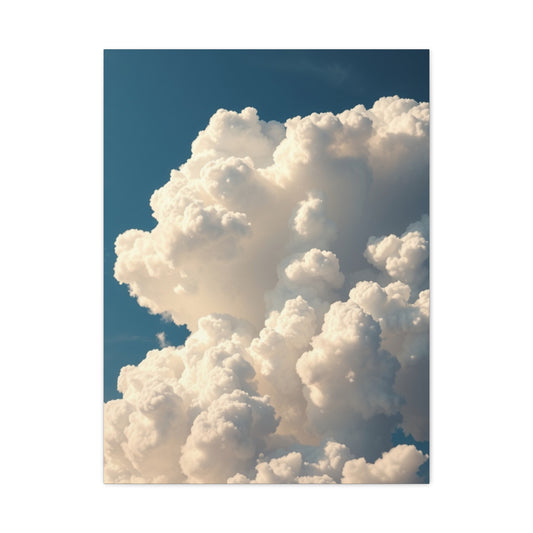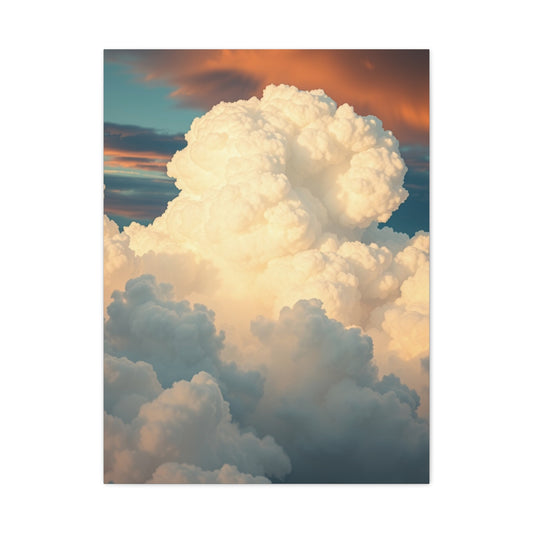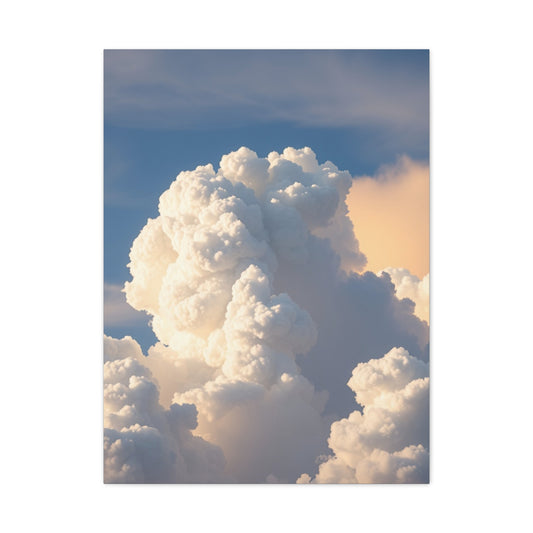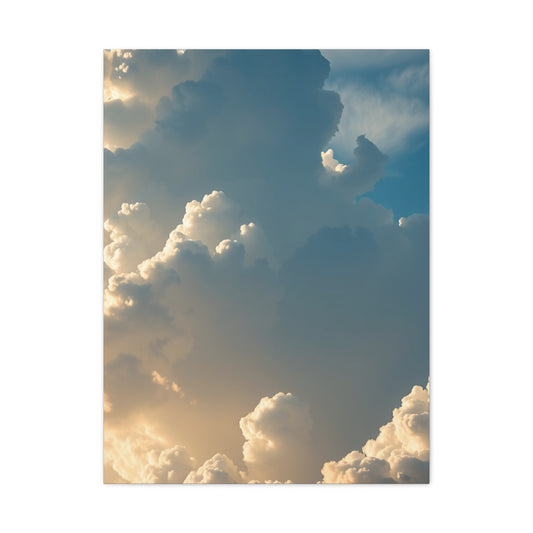Mesmerizing Abstract Clouds Wall Art: Transform Your Living Space with Ethereal Beauty
The realm of interior design has witnessed a remarkable surge in the popularity of celestial-themed decorative elements, particularly those capturing the ephemeral beauty of atmospheric formations. Among these captivating artistic expressions, hypnotic abstract clouds wall art stands as a testament to humanity's enduring fascination with the ever-changing canvas of the sky. This extraordinary form of visual representation transcends traditional boundaries, offering viewers an immersive experience that combines the organic fluidity of natural phenomena with the bold creativity of contemporary artistic vision.
The allure of cloud-inspired artwork lies in its ability to evoke a profound sense of wonder and tranquility within any living space. Unlike conventional decorative pieces that may feel static or confined, abstract cloud compositions possess an inherent dynamism that mirrors the perpetual motion of their natural counterparts. The interplay of colors, textures, and forms creates a visual narrative that speaks to our deepest connections with the natural world, while simultaneously embracing the limitless possibilities of artistic interpretation.
Contemporary artists have embraced the challenge of capturing the intangible essence of atmospheric beauty, resulting in remarkable creations that blur the lines between reality and imagination. These masterpieces incorporate sophisticated color palettes that range from gentle pastels reminiscent of dawn's first light to bold, saturated hues that echo the dramatic intensity of storm-laden skies. The fusion of traditional artistic principles with modern aesthetic sensibilities has given birth to a genre that resonates with diverse audiences, appealing to those who appreciate both natural beauty and contemporary design.
The therapeutic qualities of cloud-themed artwork cannot be overstated. In our increasingly urbanized world, where concrete structures dominate our visual landscape, these ethereal representations serve as windows to the boundless expanse of the heavens. They offer respite from the geometric rigidity of modern architecture, introducing organic curves and flowing forms that mirror the gentle undulations of atmospheric formations. This visual relief contributes to the creation of spaces that feel more harmonious, balanced, and conducive to relaxation and contemplation.
The Artistic Journey Behind Atmospheric Masterpieces
The creation of exceptional abstract clouds wall art represents a complex artistic journey that begins with careful observation of natural phenomena and culminates in the transformation of these observations into compelling visual narratives. Artists who specialize in this genre possess a unique ability to distill the ephemeral beauty of atmospheric formations into lasting artistic expressions that capture both their physical characteristics and emotional resonance.
The process typically commences with extensive study of meteorological patterns, cloud formations, and the interplay of light and shadow across the celestial canvas. This foundational understanding enables artists to create works that, while abstract in nature, maintain an authentic connection to their natural inspirations. The careful observation of how sunlight filters through various cloud densities, creating subtle gradations of color and illumination, informs the artist's approach to color selection and layering.
Color theory plays a pivotal role in the development of these atmospheric masterpieces. Artists must possess an intimate understanding of how different hues interact to create the illusion of depth, movement, and atmospheric perspective. The strategic use of warm and cool tones helps establish the emotional temperature of the piece, while careful attention to value relationships ensures that the composition maintains visual coherence despite its abstract nature.
Texture becomes another crucial element in the artistic process, as artists seek to replicate the varied characteristics of different cloud types. From the billowing softness of cumulus formations to the wispy delicacy of cirrus clouds, each atmospheric phenomenon presents unique textural challenges that require specific artistic techniques. The successful integration of these varied textures within a cohesive composition demands exceptional skill and artistic sensitivity.
The evolution from initial concept to finished artwork involves numerous iterations and refinements. Artists often create multiple studies, experimenting with different color combinations, compositional arrangements, and textural approaches before arriving at their final vision. This iterative process ensures that each piece achieves the desired balance between abstract expression and naturalistic inspiration, resulting in artwork that resonates on both intellectual and emotional levels.
Understanding Color Psychology in Cloud Art
The psychological impact of color in abstract clouds wall art extends far beyond mere aesthetic appeal, delving into the profound ways in which different hues influence human emotion, perception, and well-being. The strategic selection and arrangement of colors within these atmospheric compositions can dramatically alter the mood and energy of a space, making color psychology a crucial consideration for both artists and collectors.
Blue tones, which frequently dominate cloud-themed artwork, carry associations with tranquility, stability, and infinite space. These hues naturally evoke the expansiveness of the sky, creating a sense of openness and freedom that can make even compact living spaces feel more spacious and airy. The psychological effects of blue are well-documented, with research indicating that exposure to various shades of this color can reduce stress levels, lower blood pressure, and promote feelings of calm and security.
The incorporation of golden hues introduces warmth and optimism to cloud compositions, reflecting the magical moments when sunlight illuminates atmospheric formations. These warm tones create visual anchors within the cooler blue palette, establishing a dynamic tension that prevents the artwork from feeling too cool or distant. Gold and yellow accents often serve as focal points, drawing the viewer's attention and creating visual pathways through the composition.
White and lighter tones within cloud art serve multiple functions, both practical and psychological. From a compositional standpoint, these lighter values create contrast and definition, helping to establish the three-dimensional quality of the cloud forms. Psychologically, white represents purity, clarity, and new beginnings, contributing to the overall sense of renewal and possibility that cloud imagery often evokes.
The subtle incorporation of violet and lavender tones adds sophistication and mystery to cloud compositions. These colors, often associated with twilight and dawn, introduce an element of temporal ambiguity that allows viewers to project their own experiences and memories onto the artwork. The psychological associations with these hues include creativity, spirituality, and introspection, making them valuable additions to spaces intended for contemplation or artistic pursuits.
Contemporary artists often experiment with unexpected color combinations, incorporating coral pinks, sage greens, or deep purples to create unique atmospheric interpretations. These unconventional choices can transform familiar cloud imagery into something entirely fresh and contemporary, appealing to viewers who appreciate innovation and artistic boldness while still maintaining the essential emotional resonance of the sky-inspired theme.
Spatial Transformation Through Atmospheric Artwork
The placement and scale of abstract clouds wall art can fundamentally transform the perceived dimensions and character of interior spaces, making these pieces powerful tools for spatial manipulation and environmental enhancement. Understanding the principles of visual perception and spatial psychology enables homeowners and designers to maximize the impact of these atmospheric masterpieces.
Large-scale cloud compositions possess the unique ability to dissolve visual boundaries, creating the illusion of expanded space by drawing the viewer's gaze upward and outward. When positioned strategically on prominent walls, these expansive artworks can make rooms appear significantly larger than their actual dimensions. The flowing, organic forms of cloud imagery naturally counteract the angular geometry of architectural elements, softening harsh lines and creating a more harmonious visual environment.
The concept of visual weight plays a crucial role in how cloud artwork affects spatial perception. Despite their ethereal subject matter, these pieces can serve as substantial visual anchors within a room's design scheme. The key lies in understanding how different elements within the composition—color intensity, contrast levels, and textural complexity—contribute to the overall visual weight of the piece. Properly balanced cloud artwork can ground a space without overwhelming it, creating stability while maintaining an sense of lightness and movement.
Lighting considerations become particularly important when displaying atmospheric artwork, as these pieces often rely on subtle gradations and nuanced color relationships for their full impact. Natural lighting throughout the day can dramatically alter the appearance of cloud compositions, with changing illumination revealing different aspects of the artwork's complexity. This dynamic quality ensures that the piece continues to offer fresh visual experiences over time, preventing the sense of visual fatigue that can occur with more static artwork.
The psychological concept of environmental restoration theory suggests that exposure to nature-inspired imagery, such as cloud formations, can help reduce mental fatigue and restore cognitive function. When incorporated into living or working spaces, these atmospheric artworks may contribute to improved focus, creativity, and overall well-being. This restoration effect is particularly pronounced in urban environments where direct contact with natural landscapes is limited.
Multiple cloud artworks can be arranged in series or groupings to create immersive atmospheric environments. This approach works particularly well in larger spaces where a single piece might appear isolated or insufficient. The arrangement of multiple pieces allows for the creation of visual narratives that can guide movement through a space while maintaining thematic coherence.
Material Excellence and Craftsmanship in Contemporary Cloud Art
The technical execution of abstract clouds wall art requires sophisticated understanding of materials, printing processes, and finishing techniques to ensure that the final product accurately captures the artist's vision while providing lasting durability and visual impact. Contemporary production methods have revolutionized the accessibility of high-quality atmospheric artwork, making museum-caliber pieces available for residential and commercial applications.
Canvas selection forms the foundation of exceptional cloud artwork, with different fabric weights and textures contributing significantly to the final appearance of the piece. Heavy-weight canvases provide superior dimensional stability and can support more aggressive printing techniques, while their substantial feel conveys quality and permanence. The texture of the canvas weave interacts with printed imagery in subtle but important ways, with finer weaves allowing for greater detail reproduction and coarser textures adding organic tactility that complements the natural theme.
Modern printing technologies have achieved remarkable fidelity in color reproduction, enabling the accurate translation of digital artwork into physical form. Archival-quality inks ensure color stability over extended periods, preventing the fading and color shifts that once plagued printed artwork. The use of multiple ink colors in printing processes allows for subtle gradations and complex color relationships that closely mirror the nuanced beauty of natural atmospheric phenomena.
Surface treatments and protective coatings add another layer of quality to cloud artwork. UV-resistant treatments protect against the harmful effects of sunlight, while moisture-resistant finishes help maintain the artwork's integrity in varying environmental conditions. Some contemporary pieces incorporate specialized surface textures that enhance the three-dimensional quality of the cloud imagery, creating subtle relief patterns that catch and reflect light in compelling ways.
Frame selection and construction significantly impact both the aesthetic appeal and longevity of cloud artwork. Quality frames not only protect the artwork but also serve as transitional elements between the piece and its surrounding environment. The choice of frame materials, colors, and profiles can either complement or contrast with the atmospheric imagery, allowing for customization based on individual preferences and interior design schemes.
Professional mounting and stretching techniques ensure that cloud artwork maintains its intended appearance over time. Proper tensioning prevents sagging or rippling of the canvas surface, while appropriate mounting hardware ensures secure installation that can withstand environmental changes and normal handling. These technical considerations, while often invisible to casual observers, contribute significantly to the overall quality and longevity of the finished piece.
Versatile Placement Strategies for Maximum Impact
The strategic placement of abstract clouds wall art requires careful consideration of multiple factors including room function, lighting conditions, architectural features, and existing design elements. Different spaces within the home offer unique opportunities and challenges for displaying atmospheric artwork, and understanding these nuances enables optimal positioning for maximum visual and emotional impact.
Living rooms present perhaps the most versatile canvas for cloud artwork display, offering ample wall space and typically serving as the primary gathering area for family and guests. The focal wall behind seating arrangements provides an ideal location for larger cloud compositions, creating a dramatic backdrop that enhances conversation and relaxation. The key consideration in living room placement involves balancing the artwork's visual weight with other room elements to avoid overwhelming or competing with furniture arrangements.
Bedroom environments benefit from the calming influence of cloud imagery, with the gentle, flowing forms promoting restful sleep and peaceful awakening. Above-bed placement remains popular, but consideration must be given to the scale and intensity of the chosen piece. Softer color palettes and more subtle compositions work particularly well in sleeping spaces, contributing to the overall sense of sanctuary and retreat that bedrooms should provide.
Home office environments can be significantly enhanced by the presence of atmospheric artwork, with cloud imagery providing visual relief from work-related stress while potentially stimulating creativity and innovative thinking. The positioning should consider sight lines from the primary work area, ensuring that the artwork is visible during breaks from concentrated work without becoming a distraction during focused activities.
Hallways and transitional spaces offer opportunities for dramatic artistic statements, with cloud artwork serving as visual bridges between different areas of the home. Long, horizontal cloud compositions work particularly well in corridor spaces, creating a sense of movement and flow that complements the transitional nature of these areas. The scale must be carefully considered to avoid overwhelming narrow spaces while ensuring adequate visual impact.
Dining areas present unique opportunities for atmospheric artwork, with cloud imagery contributing to the creation of memorable dining experiences. The psychological associations with sky imagery can enhance the sense of celebration and gathering that characterizes successful dining spaces. Positioning should consider the seated eye level of diners while avoiding locations where the artwork might be obscured by serving activities.
Creating Harmonious Interior Design Schemes
The successful integration of abstract clouds wall art into existing interior design schemes requires understanding fundamental principles of color harmony, visual balance, and stylistic coherence. These atmospheric pieces possess sufficient versatility to complement a wide range of design approaches, from minimalist contemporary to richly layered traditional styles.
Contemporary interior design styles naturally embrace the clean lines and sophisticated color palettes typical of modern cloud artwork. The organic forms of atmospheric imagery provide an effective counterpoint to the geometric precision of contemporary furniture and architectural elements. The key lies in maintaining sufficient contrast between the flowing, natural forms of the artwork and the structured elements of contemporary design while ensuring that color relationships remain harmonious.
Traditional interior design schemes can successfully incorporate cloud artwork through careful attention to color coordination and scale relationships. The ethereal quality of atmospheric imagery can soften the formality of traditional settings while introducing contemporary relevance. Warm color palettes in cloud artwork complement the rich tones often found in traditional interiors, while cooler palettes can provide refreshing contrast.
Transitional design approaches offer perhaps the most natural fit for cloud artwork, as these styles deliberately blend traditional and contemporary elements. The timeless appeal of sky imagery transcends specific stylistic boundaries, making cloud art an ideal choice for spaces that seek to balance classic comfort with modern sophistication. The versatility of atmospheric themes allows for seamless integration with both antique and contemporary furnishings.
Scandinavian and Nordic design philosophies, with their emphasis on natural elements and light-filled spaces, provide an excellent foundation for cloud artwork display. The clean, uncluttered aesthetic of these design approaches allows atmospheric imagery to serve as focal points without competing with excessive decorative elements. The color palettes typical of Nordic design—whites, grays, and soft blues—naturally complement the hues found in most cloud compositions.
Industrial design styles present unique opportunities for creative contrast through the introduction of organic cloud imagery. The juxtaposition between hard, manufactured materials and soft, natural atmospheric forms creates dynamic visual tension that can energize industrial spaces. The challenge lies in selecting cloud artwork with sufficient visual strength to hold its own against the bold character of industrial design elements.
Benefits and Wellness
The therapeutic properties of abstract clouds wall art extend beyond simple aesthetic pleasure, incorporating documented psychological benefits that can contribute to improved mental health, stress reduction, and overall well-being. Understanding these wellness applications enables informed selection and placement of atmospheric artwork to maximize its positive impact on daily life.
Stress reduction represents one of the most immediate and measurable benefits associated with cloud imagery. Research in environmental psychology demonstrates that exposure to nature-inspired artwork can significantly reduce cortisol levels and other stress-related physiological markers. The organic, flowing forms of cloud art activate parasympathetic nervous system responses associated with relaxation and restoration, providing measurable stress relief in both residential and workplace environments.
Creativity enhancement emerges as another significant benefit of atmospheric artwork, with the abstract nature of cloud imagery stimulating imaginative thinking and innovative problem-solving. The open-ended quality of cloud forms allows viewers to project personal interpretations and associations, engaging creative mental processes that can extend beyond art appreciation into other areas of life. This creative stimulation proves particularly valuable in work environments where innovation and fresh thinking are priorities.
Sleep quality improvement often results from the calming influence of cloud artwork in bedroom environments. The gentle, rhythmic patterns typical of atmospheric compositions can help regulate circadian rhythms and promote the mental state conducive to restful sleep. The psychological associations with peaceful sky imagery contribute to the creation of bedroom environments that feel safe, tranquil, and separate from daily stresses.
Attention restoration theory suggests that cloud artwork can help combat mental fatigue caused by prolonged concentration and urban environments. The natural, organic patterns found in atmospheric imagery provide visual relief from the angular, geometric patterns that dominate modern built environments. This visual contrast helps restore mental focus and prevent the cognitive exhaustion associated with information overload.
Emotional regulation benefits emerge through the stabilizing influence of cloud imagery on mood and emotional state. The dynamic yet peaceful quality of atmospheric artwork provides emotional anchoring during periods of stress or uncertainty while avoiding the static quality that can contribute to feelings of stagnation. The continuous subtle variations within cloud compositions maintain visual interest that supports emotional engagement without overwhelming sensitive viewers.
Maintenance and Longevity Strategies
Preserving the beauty and integrity of abstract clouds wall art requires understanding proper care techniques, environmental considerations, and preventive measures that ensure long-term enjoyment and value retention. Implementing appropriate maintenance strategies from the initial installation protects investment value while maintaining optimal visual impact.
Environmental control forms the foundation of artwork preservation, with temperature and humidity fluctuations posing the greatest threats to canvas-based pieces. Maintaining stable environmental conditions prevents expansion and contraction cycles that can stress canvas fibers and mounting systems. Ideal conditions include temperatures between 65-75°F and relative humidity levels of 45-55%, though minor variations are typically acceptable for quality pieces with proper construction.
Light exposure management prevents fading and color degradation that can diminish the visual impact of cloud artwork over time. While UV-resistant coatings provide significant protection, limiting direct sunlight exposure remains important for long-term color stability. Window treatments, strategic placement, and UV-filtering glass or acrylic can provide additional protection in high-light environments.
Cleaning procedures must balance the need for maintenance with the risk of damage to delicate surfaces and printing inks. Gentle dusting with soft, dry brushes removes accumulated particles without risking moisture damage or surface scratching. For more thorough cleaning, professional services specializing in artwork care provide the expertise necessary to maintain appearance without compromising integrity.
Handling protocols become important during cleaning, repositioning, or storage activities. Proper lifting techniques, protective materials, and careful movement prevent damage to frames, canvas, and mounting hardware. Never attempt to lift large pieces by the frame alone, and always provide adequate support for the entire artwork during movement.
Inspection schedules help identify potential problems before they become serious threats to artwork integrity. Regular examination of frame joints, canvas tension, and surface condition enables early intervention that can prevent minor issues from developing into costly restoration requirements. Professional assessment every few years provides expert evaluation of condition and maintenance needs.
Cultural Significance and Artistic Heritage
Abstract clouds wall art connects contemporary living spaces to humanity's enduring fascination with atmospheric phenomena and celestial beauty, representing a modern continuation of artistic traditions that span cultures and centuries. Understanding this cultural context enriches appreciation for contemporary cloud artwork while highlighting its place within the broader continuum of human artistic expression.
Historical precedents for cloud imagery in art trace back to ancient civilizations, where atmospheric phenomena held deep spiritual and symbolic significance. From Chinese landscape paintings that emphasized the relationship between earth and sky to Western religious art that used clouds to suggest divine presence, artists have long recognized the powerful emotional resonance of atmospheric imagery. Contemporary cloud art inherits this rich tradition while adapting it for modern sensibilities and living spaces.
Cross-cultural interpretations of cloud symbolism reveal universal themes that transcend specific artistic traditions. Across diverse cultures, clouds represent transformation, possibility, and the connection between earthly and spiritual realms. This universal resonance helps explain the broad appeal of cloud artwork across different demographic groups and cultural backgrounds.
Modern artistic movements have embraced cloud imagery as a vehicle for exploring abstract expression, color theory, and emotional communication. Abstract expressionist painters recognized the potential of atmospheric forms to convey complex emotional states without relying on literal representation. Contemporary cloud artists build upon this foundation while incorporating new materials, techniques, and aesthetic sensibilities.
The democratization of art through modern production methods has made high-quality cloud artwork accessible to broader audiences, extending the cultural impact of atmospheric imagery beyond traditional art collecting circles. This accessibility ensures that the cultural significance of cloud art continues to evolve through interaction with diverse viewers and living environments.
Digital art platforms and online galleries have created new opportunities for cloud artists to reach global audiences while participating in virtual art communities that transcend geographical boundaries. These platforms facilitate cultural exchange and artistic collaboration that enriches the development of contemporary cloud art while preserving its essential connection to natural phenomena.
Customization Possibilities and Personal Expression
The inherent flexibility of abstract clouds wall art makes it particularly well-suited for customization and personalization, allowing homeowners to create unique pieces that reflect individual tastes, color preferences, and spatial requirements. Understanding available customization options empowers consumers to move beyond standard offerings toward truly personalized artistic expressions.
Color palette customization represents one of the most popular and effective personalization options, enabling buyers to specify hues that complement existing interior design schemes or reflect personal color preferences. Many artists and producers offer custom color matching services that can incorporate specific paint colors, fabric tones, or other design elements from the buyer's environment into atmospheric compositions.
Scale modification allows cloud artwork to fit specific spatial requirements while maintaining proper proportional relationships within the composition. Custom sizing ensures optimal visual impact whether the intended placement is an intimate reading nook or an expansive living room wall. Professional artists understand how to adapt compositions across different scales while preserving their essential character and visual balance.
Compositional variations enable personalization of the artistic arrangement while maintaining the essential atmospheric theme. Some viewers prefer dramatic, dynamic cloud formations that suggest movement and energy, while others gravitate toward gentle, contemplative arrangements that emphasize tranquility and peace. Custom compositions can be developed to match personality preferences and intended room functions.
Mixed media incorporation offers opportunities to combine cloud imagery with other artistic elements that hold personal significance. Subtle integration of landscape elements, architectural features, or abstract geometric forms can create unique hybrid compositions that reflect individual interests and experiences while maintaining the essential sky connection.
Series creation allows for the development of multiple related pieces that can be displayed together or in different locations throughout the home. Custom series maintain thematic coherence while offering variety in color, scale, or compositional emphasis. This approach works particularly well for larger homes where multiple cloud artworks can create visual continuity between spaces.
Environmental Considerations and Sustainable Practices
Contemporary production of abstract clouds wall art increasingly incorporates environmental consciousness and sustainable practices, reflecting growing consumer awareness of ecological impact and demand for responsible manufacturing processes. Understanding these environmental considerations enables informed purchasing decisions that align with personal values while supporting sustainable industry practices.
Sustainable material sourcing prioritizes renewable resources, recycled content, and environmentally responsible harvesting practices. Canvas manufacturers increasingly offer options made from organic cotton, hemp, or recycled fibers that reduce environmental impact compared to conventional materials. Similarly, frame manufacturers are expanding offerings of sustainably harvested wood and recycled metal options.
Eco-friendly printing processes utilize water-based inks, solvent-free formulations, and energy-efficient production methods that minimize harmful emissions and waste generation. Advanced printing equipment incorporates precise ink delivery systems that reduce waste while achieving superior color accuracy and consistency. These improvements benefit both environmental impact and final product quality.
Packaging innovations focus on reducing material usage, incorporating recycled content, and designing for end-of-life recyclability. Many producers have eliminated plastic packaging components in favor of biodegradable or recyclable alternatives. Protective packaging designs optimize material efficiency while maintaining adequate protection during shipping and handling.
Local production networks reduce transportation-related environmental impact while supporting regional economic development. Print-on-demand services enable local fulfillment that minimizes shipping distances while reducing inventory-related waste. These distributed production models offer environmental benefits while potentially reducing costs and delivery times for consumers.
End-of-life considerations increasingly influence product design decisions, with manufacturers developing cloud artwork that can be easily disassembled for material recovery and recycling. Modular frame designs, separable canvas mounting systems, and material identification marking facilitate responsible disposal and material recovery when artwork reaches the end of its useful life.
Digital Integration and Smart Home
The intersection of abstract clouds wall art with digital integration and smart home systems opens new possibilities for dynamic, responsive artistic experiences that adapt to changing conditions, preferences, and lifestyles. Understanding these emerging capabilities enables forward-thinking consumers to incorporate atmospheric artwork into comprehensive home environments that respond intelligently to their needs.
Digital display artwork offers the ultimate flexibility in cloud imagery selection and customization, enabling instant changes in composition, color palette, and scale through simple interface commands. High-resolution display screens dedicated to art reproduction have achieved quality levels that rival traditional printed artwork while offering unlimited variety and customization options. These systems can rotate through extensive libraries of cloud imagery or adapt displays based on time of day, season, or mood preferences.
Smart lighting integration enhances traditional cloud artwork through dynamic illumination that responds to ambient conditions, time of day, or programmed preferences. Carefully designed lighting systems can emphasize different aspects of atmospheric artwork throughout the day, creating subtle variations in appearance that maintain visual interest over extended periods. Color-changing LED systems can modify the apparent color temperature of artwork to complement natural lighting conditions or create specific mood environments.
Environmental sensors enable artwork displays to respond automatically to changing conditions such as weather patterns, natural light levels, or occupancy status. Cloud artwork can intensify during overcast weather to provide psychological compensation for reduced natural light, or shift to calming compositions during detected stress periods. These responsive capabilities create living art experiences that actively contribute to environmental comfort and well-being.
Voice control integration allows for hands-free adjustment of digital cloud artwork or associated lighting systems through natural language commands. Users can request specific atmospheric moods, color palettes, or compositional styles without physical interaction with control systems. This capability proves particularly valuable for individuals with mobility limitations or in situations where manual control is impractical.
Mobile app connectivity enables remote monitoring and control of cloud artwork displays, allowing users to adjust settings from anywhere in the home or even remotely. Scheduling capabilities can automatically adapt artwork presentations to daily routines, while remote access enables preparation of living spaces before arrival. These capabilities transform cloud artwork from static decoration into dynamic environmental components.
Professional Installation and Display Considerations
The proper installation and display of abstract clouds wall art requires careful planning, appropriate tools, and understanding of structural considerations that ensure both optimal visual impact and long-term safety. Professional installation services provide expertise in handling valuable artwork while addressing the technical challenges associated with different wall types, artwork sizes, and environmental conditions.
Wall assessment forms the foundation of successful artwork installation, with different wall materials and construction methods requiring specific mounting approaches and hardware selections. Drywall installations typically utilize hollow wall anchors or stud mounting for heavier pieces, while masonry walls require specialized fasteners and drilling techniques. Professional installers possess the knowledge and equipment necessary to identify appropriate mounting strategies for each situation.
Weight distribution calculations become critical for larger cloud artwork, as improper mounting can lead to failure that damages both the artwork and surrounding wall surfaces. Professional installers understand load-bearing requirements and can specify appropriate hardware configurations that provide adequate support with appropriate safety margins. These calculations must account for both static loads and dynamic forces caused by building movement or seismic activity.
Leveling and alignment precision ensures that cloud artwork displays properly within architectural contexts while maintaining visual balance with surrounding elements. Professional installers utilize precision measuring tools and alignment techniques that achieve perfect positioning even in challenging situations such as uneven walls or complex architectural features. Proper alignment becomes particularly critical when installing multiple pieces or creating gallery wall arrangements.
Lighting coordination involves planning for both existing illumination sources and potential future modifications that might affect artwork display quality. Professional installers can recommend optimal positioning relative to natural light sources while identifying opportunities for accent lighting that enhances artistic impact. Understanding the interaction between artwork and lighting prevents common problems such as glare, color distortion, or uneven illumination.
Safety protocols ensure that installation procedures protect both artwork and installation personnel while complying with relevant building codes and safety standards. Professional installers maintain comprehensive insurance coverage and follow established safety procedures that minimize risks during installation activities. These protocols become particularly important when working at height or with valuable artwork that requires special handling procedures.
Conclusion
Abstract clouds wall art represents a remarkable convergence of natural inspiration, artistic expression, and interior design functionality that continues to evolve through technological innovation and changing lifestyle preferences. The enduring appeal of atmospheric imagery speaks to fundamental human connections with the natural world while offering practical solutions for creating beautiful, comfortable living spaces that support well-being and personal expression.
The journey through the comprehensive world of cloud artwork reveals multiple dimensions of value that extend far beyond simple decoration. From the psychological benefits of stress reduction and creativity enhancement to the practical considerations of space transformation and investment potential, quality cloud artwork serves multiple functions that justify its place in contemporary homes and commercial environments.
The technical sophistication of modern production methods ensures that today's cloud artwork achieves unprecedented levels of quality, durability, and visual impact while incorporating environmental consciousness and sustainable practices. Advanced printing technologies, superior materials, and innovative construction techniques combine to create pieces that maintain their beauty and integrity over extended periods, providing lasting value for homeowners and collectors.
The versatility of cloud artwork in complementing diverse interior design styles while adapting to seasonal changes and evolving preferences makes it an particularly wise choice for those seeking long-term decorative solutions. Unlike trend-dependent artwork that may feel dated within a few years, quality atmospheric imagery possesses timeless appeal that transcends specific stylistic movements while remaining fresh and relevant.
The emerging integration of digital technologies and smart home systems opens exciting possibilities for the future of cloud artwork, enabling dynamic, responsive presentations that adapt to changing conditions and preferences. These developments promise to enhance the already significant impact of atmospheric imagery while maintaining its essential connection to natural beauty and tranquility.
The cultural significance of cloud imagery connects contemporary living spaces to humanity's enduring fascination with atmospheric phenomena, providing depth and meaning that enriches daily life beyond mere aesthetic pleasure. This cultural resonance ensures continued relevance and appreciation across diverse demographics and cultural backgrounds.
Investment considerations support the acquisition of quality cloud artwork as both an aesthetic enhancement and financial asset, with factors such as artist reputation, limited availability, and superior construction contributing to long-term value retention. The growing market demand for atmospheric imagery suggests continued appreciation potential for well-chosen pieces.
Professional installation and proper maintenance practices ensure that cloud artwork achieves its full potential impact while maintaining its condition and value over time. Understanding these requirements enables owners to protect their investments while maximizing the daily benefits of atmospheric imagery.


